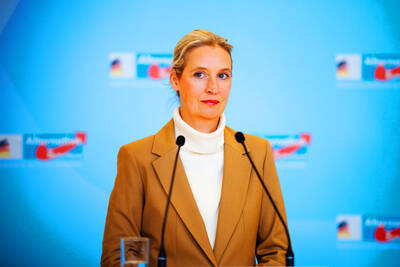A record number of super-rich people are abandoning Norway for low-tax nations after the center-left government increased wealth taxes to 1.1 percent.
More than 30 Norwegian billionaires and multimillionaires left Norway last year, according to research by the newspaper Dagens Naeringsliv.
That was more than the total number of super-rich people who left the nation during the previous 13 years, it said.
Even more super-rich individuals are expected to leave this year because of the increase in wealth tax in November last year, costing the government tens of millions of lost tax receipts.
Many have moved to Switzerland, where taxes are much lower. They include billionaire fisher turned industrial tycoon Kjell Inge Rokke, who moved to the Italian-speaking canton of Lugano, close to his favored hangout Lake Como and fashion capital Milan.
Rokke, 64, is the fourth-richest Norwegian, with an estimated fortune of about 19.6 billion kroner (US$1.9 billion).
In an open letter, he said: “I’ve chosen Lugano as my new residence — it is neither the cheapest nor has the lowest taxes — but in return, it is a great place with a central location in Europe... For those close to the company and to me, I am just a click away.”
His relocation is costing Norway about 175 million kroner in lost tax revenue a year. Last year, Rokke was the nation’s highest taxed individual.
Dagens Naeringsliv calculated that he has paid about 1.5 billion kroner in tax since 2008.
His move to Switzerland follows a relatively small increase in tax aimed at the nation’s super-rich, who face wealth taxes at both the local and state level. That includes a municipal tax of 0.7 percent on assets in excess of 1.7 million kroner for individuals, or 3.4 million kroner for couples. There is also a state wealth tax rate of 0.3 percent on assets above 1.7 million kroner.
The Norwegian government in November last year raised the state rate to 0.4 percent for assets above 20 million kroner for individuals and 40 million kroner for couples, taking the maximum wealth tax rate to 1.1 percent.
Ole Gjems-Onstad, a professor emeritus at Norwegian Business School, said he estimated that those who had left the nation had a combined fortune of at least 600 billion kroner.
“In my opinion it is a little bit like Brexit. Norway has no great tradition of self-harm and the flood of entrepreneurs moving abroad has come as something of a shock,” Gjems-Onstad said. “Some politicians are, as you know, blaming the wealthy people moving, but I think many ordinary people quite simply do not like that our best investors are leaving.”
Tord Ueland Kolstad, a retail estate and Salmon farming investor, with a fortune of about 1.5 billion kroner, has moved from Bodo in northern Norway to Lucerne in Switzerland.
“This was not what I wanted, but the toughened and increased tax rules of the current government means that I, as the founder and responsible owner, have no choice,” he told Norwegian broadcaster TV 2.
Kolstad said the increase in the wealth tax meant he would pay just over 6 million kroner, which he complained would mean he would need to pay himself a dividend of 10 million kroner to take into account increased dividend tax.
“This is unfortunately the reality of today’s tax policy. It is unjustifiable to impose such costs on the company when you want to create new jobs,” he said.
Kolstad told the Norwegian newspaper Aftenposten that when he first arrived in Switzerland he did not have any friends there.
“But now there are several of us [Norwergians], so we meet every now and then for coffee,” he said.
Erlend Grimstad, a state secretary in the Norwegian Ministry of Finance, told the Guardian he hoped that wealthy Norwegians would return “in time.”
“If you have enjoyed success and become rich in Norway, we hope you will stay and continue taking part in Norwegian society,” he said.

Philippine President Ferdinand Marcos Jr yesterday vowed that those behind bogus flood control projects would be arrested before Christmas, days after deadly back-to-back typhoons left swathes of the country underwater. Scores of construction firm owners, government officials and lawmakers — including Marcos’ cousin congressman — have been accused of pocketing funds for substandard or so-called “ghost” infrastructure projects. The Philippine Department of Finance has estimated the nation’s economy lost up to 118.5 billion pesos (US$2 billion) since 2023 due to corruption in flood control projects. Criminal cases against most of the people implicated are nearly complete, Marcos told reporters. “We don’t file cases for

A feud has broken out between the top leaders of the far-right Alternative for Germany (AfD) party on whether to maintain close ties with Russia. The AfD leader Alice Weidel this week slammed planned visits to Russia by some party lawmakers, while coleader Tino Chrupalla voiced a defense of Russian President Vladimir Putin. The unusual split comes at a time when mainstream politicians have accused the anti-immigration AfD of acting as stooges for the Kremlin and even spying for Russia. The row has also erupted in a year in which the AfD is flying high, often polling above the record 20 percent it

Ecuadorans are today to vote on whether to allow the return of foreign military bases and the drafting of a new constitution that could give the country’s president more power. Voters are to decide on the presence of foreign military bases, which have been banned on Ecuadoran soil since 2008. A “yes” vote would likely bring the return of the US military to the Manta air base on the Pacific coast — once a hub for US anti-drug operations. Other questions concern ending public funding for political parties, reducing the number of lawmakers and creating an elected body that would

‘ATTACK ON CIVILIZATION’: The culture ministry released drawings of six missing statues representing the Roman goddess of Venus, the tallest of which was 40cm Investigators believe that the theft of several ancient statues dating back to the Roman era from Syria’s national museum was likely the work of an individual, not an organized gang, officials said on Wednesday. The National Museum of Damascus was closed after the heist was discovered early on Monday. The museum had reopened in January as the country recovers from a 14-year civil war and the fall of the 54-year al-Assad dynasty last year. On Wednesday, a security vehicle was parked outside the main gate of the museum in central Damascus while security guards stood nearby. People were not allowed in because